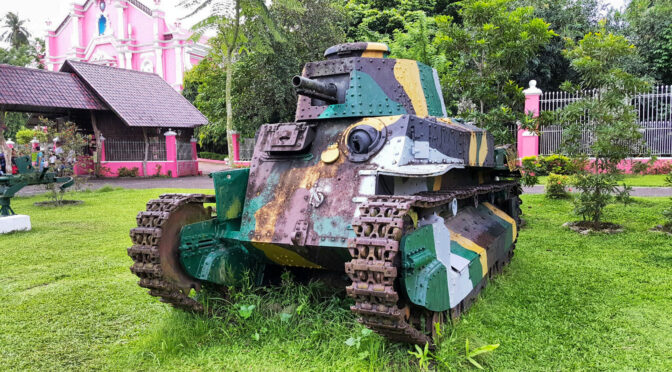On July 16th, 2017, I had the opportunity to visit the Villa Escudero Plantation and Resort during a trip to the Philippines. Villa Escudero (VE) is a working coconut plantation about two hours drive from Manila near Quezon and was founded in the 1880s by Don Placidio Escuderio and his wife Dona Claudia Marasigan. It was opened to the public in 1981 and is definitely worth visiting either as a day trip or overnight.
The reason I am writing this is that outside their museum they have a number of interesting WWII Japanese artifacts on display. What caught my eye immediately was the aging hulk of a Japanese Type 89 I-Go Otsu Medium Tank. I vaguely knew the Japanese had some tanks in WWII but this was my first time actually seeing one in person.
Quick History of the Type 89
The Type 89 was designed in 1928 and fielded by the Imperial Japanese Army from 1932-1942. The light tank version waas based on the 10-ton French Renault FT tank and the 2o-ton design was based on the Vickers medium tank and so underpowered that it was redesigned to 10 tons based on the Vickers Medium C.
It had a crew of four, a 57mm Type 90 gun with 100 rounds of ammo and two type 91 machine guns on the hull and rear of the turret with 2,745 rounds of ammo.
Given the 1920s design, it was intended to support infantry and lacked the armor of allied tanks. The Type 89 was consideredd a poor match for the American M4 Sherman for example. The Type 89 was regarded as obsolete by 1939 but was fielded in the Philippines.
The Japanese produced a Type89A I-Go Ko with a gas engine and a machine gun on the right side of the hull. It could only hit 15.5 Km/h and 113 were produced.
The second variety was the Type89B I-Go Otsu. Production started on these in 1934 and they had an air-cooled Mitsubishi A6120VD 120HP diesel engine. The machine gun was on the left side of the hull, the front hull was a single plate. The diesel engine was preferred because they had better fuel economy, more torque at lower RPM and diesel is less explosive than gasoline during a fire. 291 Otsus were produced.
Given some digging, I found the following Imperal Japanese Army units with Type 89 tanks were in the Philippines:
- 7th Tank Regiment led by Colonel Seinosuke Sonoda from 1941 to 1942. The 3rd company of the 7th tank regiment advanced south along Route 5 towards Manila.
- The 1st Tank Corps also had Type 89s
- The 3rd Regiment had 26 Type 89s
- The 4th Regiment had four Type 89s
Villa Escudero’s Type 89B
I am unsure of where VE obtained the Type 89B Otsu, if it was retrieved locally or just what. We can definitely say it is an Otsu because the machine gun is located on the left side of the hull (Ieft from the vantage of the crew looking forward).
Also, note the camo paint. I have seen black and white WWII-vintage photos of Type 89s with camo paint. I just can’t confirm the pattern or exact colors match.
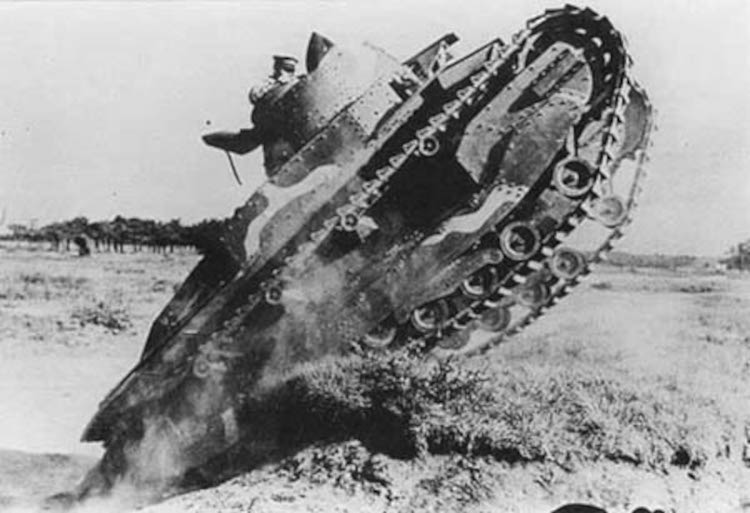
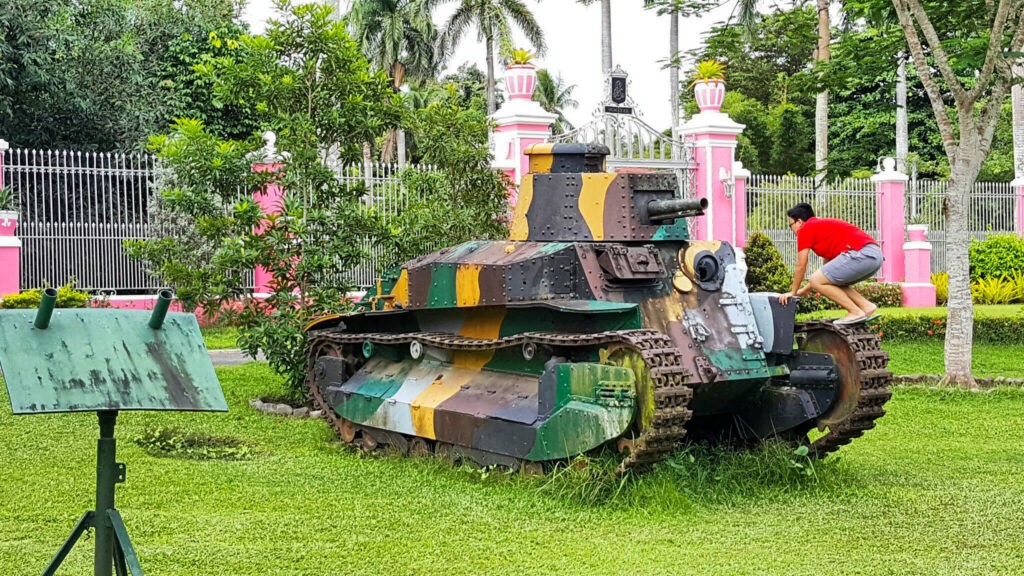
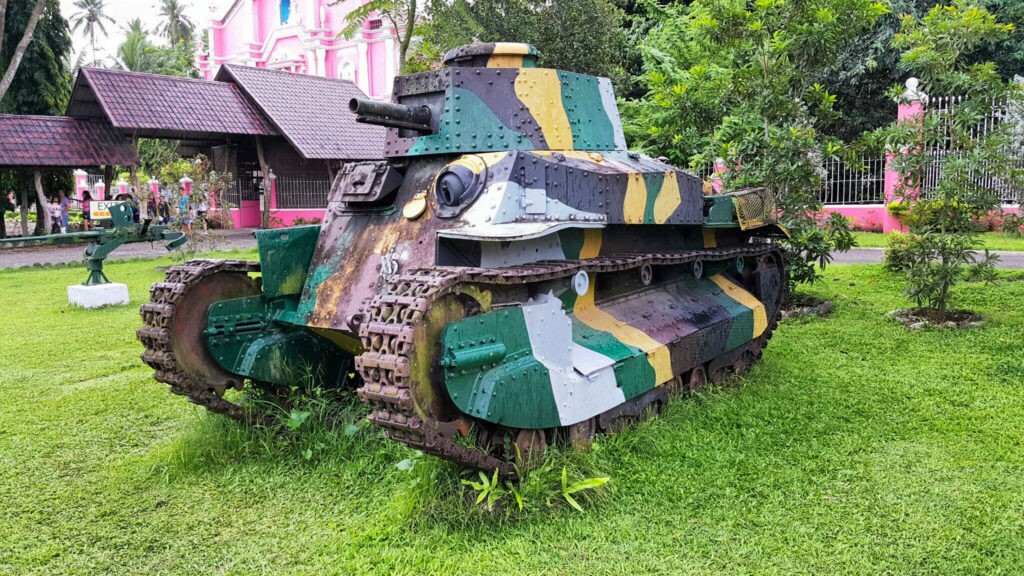
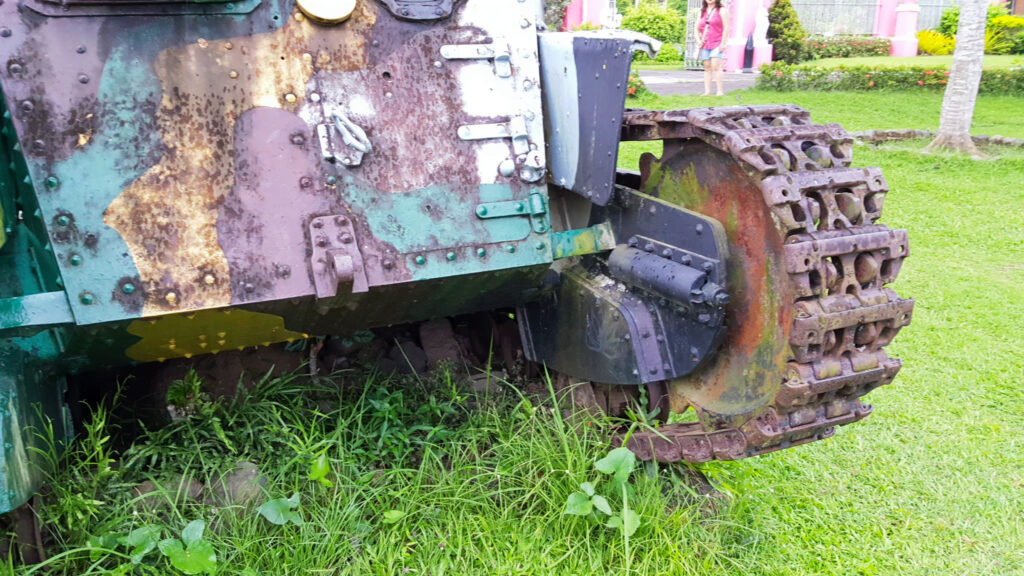
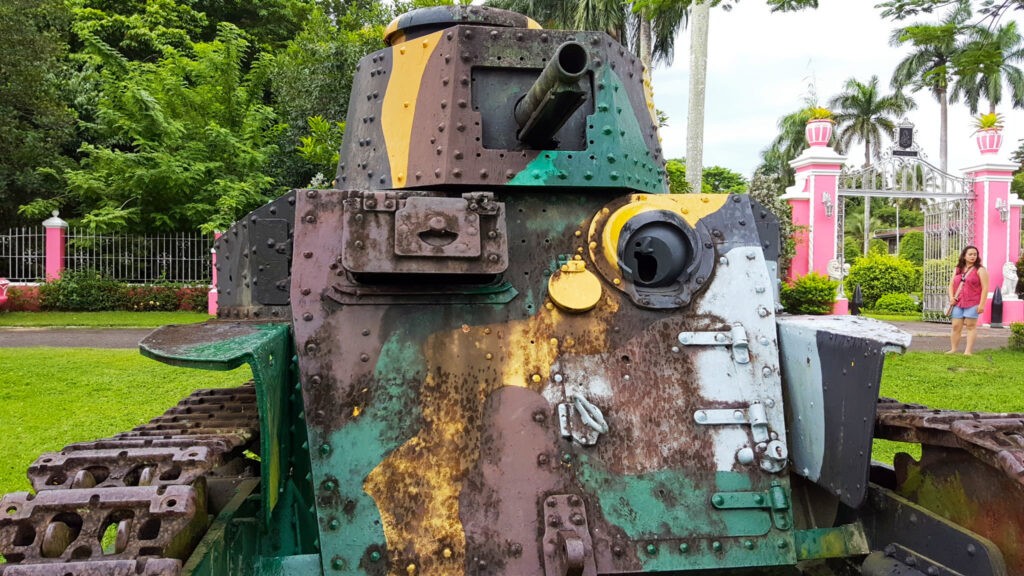
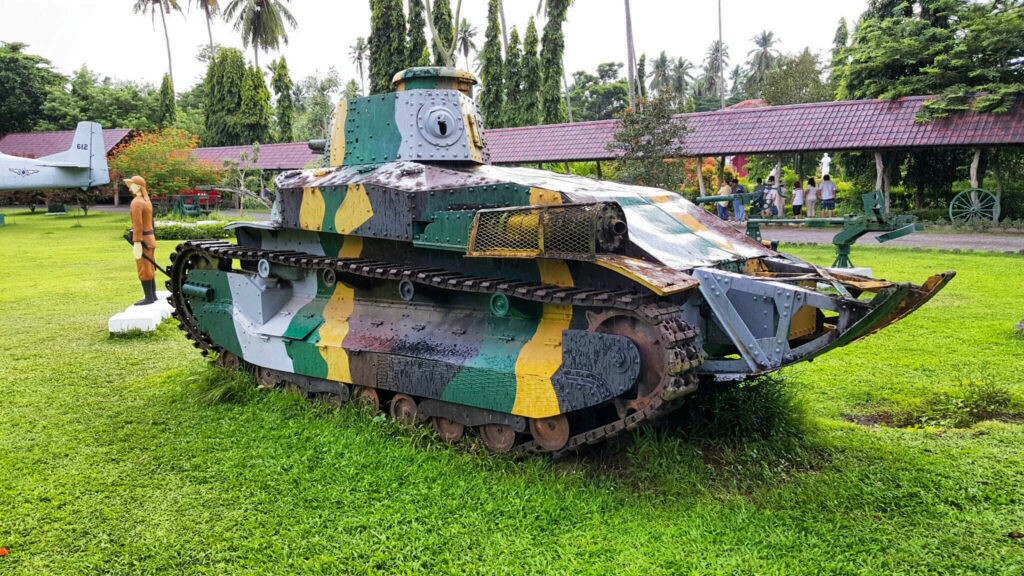
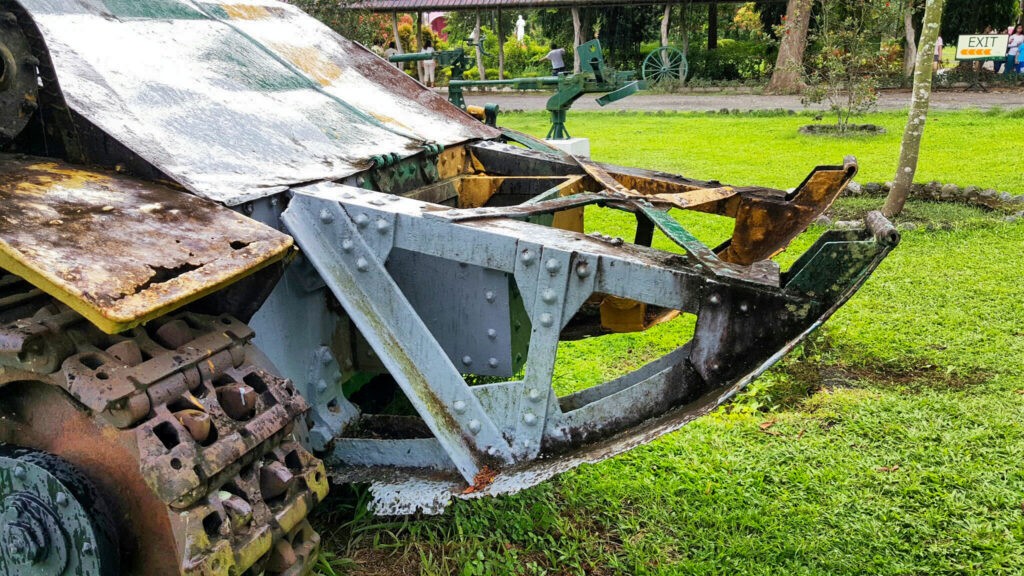
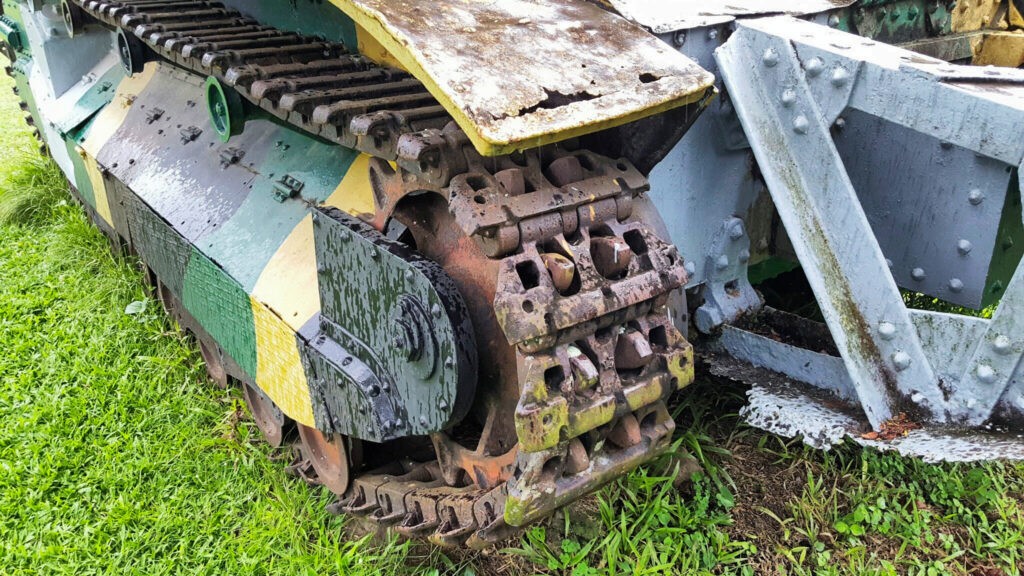
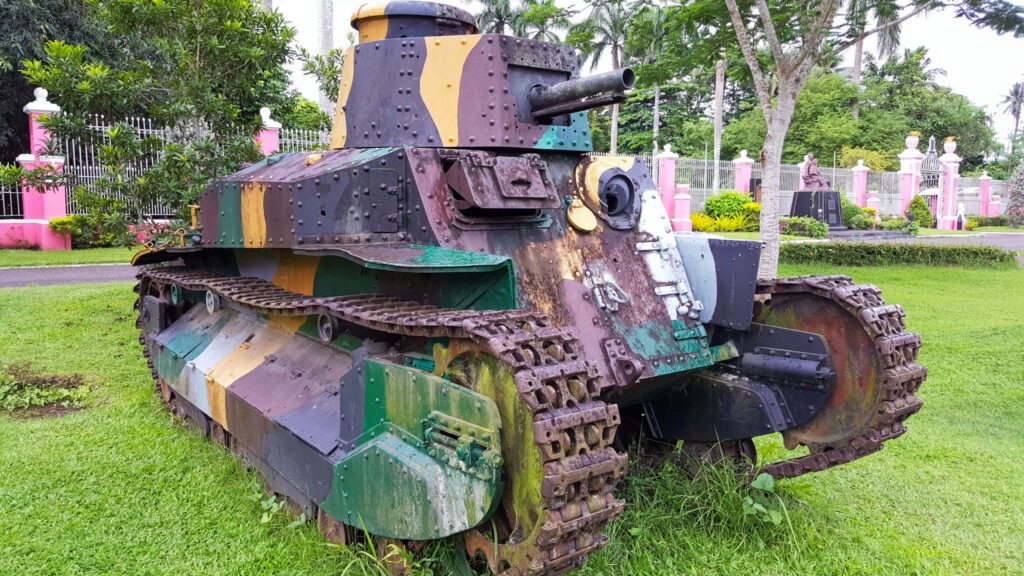
Original Video
When I see something like this, I wonder what it looked like. Here’s a black and while video with sound from Youtube that shows the Otsus and you can see they have a camo pattern and also the rear skid assembly is present.
Conclusion
If you want to see some Philippine history, great views, and have some great food then visit Villa Escudero. I’d like to thank them for trying to preserve some unique history and make it accessible to visitors.
To learn more about the Type 89 Otsu tanks, see:
- https://en.wikipedia.org/wiki/Type_89_I-Go_medium_tank
- https://worldwar2database.com/1st-company-seventh-tank-regiment-advances-on-manila/
- https://tank-afv.com/ww2/jap/Type_89_I-Go.php – this is a very detailed website with the most information about the Type 89.
- Amazon has quite a selection of paper books and Kindle books about the Philippines and WWII. Click here if you would like to see them in a new browser tab.
If you find this post useful, please share the link on Facebook, with your friends, etc. Your support is much appreciated and if you have any feedback, please email me at in**@*********ps.com. Please note that for links to other websites, we are only paid if there is an affiliate program such as Avantlink, Impact, Amazon and eBay and only if you purchase something. If you’d like to directly contribute towards our continued reporting, please visit our funding page.
